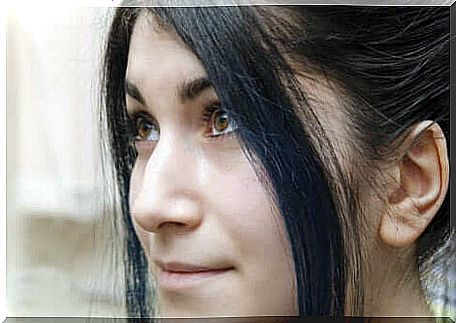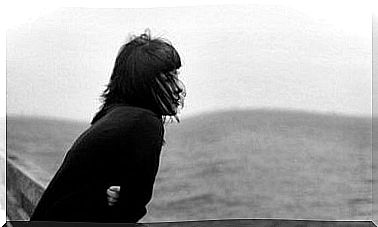Types Of Noses: What’s Yours?
There are different types of noses and each one has its own characteristics as well as its charm. Do you know them all? They are numerous and depend largely on the geographical and cultural context.

From an aesthetic point of view, the middle of the face is very important for the harmony of the features. This is why it is considered that the face depends a lot on the types of nose.
Obviously, apart from aesthetics, the nose allows us to breathe, to perceive the smells and also serves to support the glasses. We wish you today talk about the different types of noses. Find out which one is yours!
Different types of noses
The nose, as part of the face, is different and characteristic of each individual. This is why, we can say that, although they are all different, they always harmonize.
In addition, the anatomical architecture is fundamental: two cavities for the entry of air into the nostrils, two wings which cover the nostrils, the nasal septum and the tip. These are the elements that determine the shape of the nose.
However, there are considerable differences between one nose and another. They do vary depending on the shape of the tip, the height and width, the opening of the nostrils, among other aspects. From there, it is possible to classify them into large groups according to their general shape.

Flat nose
The flat nose is characterized by a short bridge with some sagging. The nostrils are extended on both sides. And the tip is also flat.
It is named so because people who have this type of nose present, in profile, a hollow or flattened appearance. In other words, the nasal appendix protrudes only slightly from the face. The flat nose is prevalent, with some differences, among the African or Asian populations. However, it is less common in Asia than in Africa.
Upturned or trumpet nose
Unlike the previous one, the upturned nose has a protruding tip. The nasal septum is usually straight, although it does curve slightly at the end. The nostrils therefore seem to point forward.
This type of nose is common among people in northern Europe. This form would be due to an adaptation of the organism to better breathe cold air.
In profile, the curled nostrils appear pointed, like those of comic book characters. Cosmetic surgery is in great demand.
Wide nose
A distinctive feature of the wide nose is constant thickening from the nasal septum to the tip. It therefore generally appears wider than it is tall. The famous basketball player Lebron James has this type of nose.
In addition, the wings are dilated, as well as the nostrils. It is also called Nubian , as it is common among the inhabitants of this region. But it is also present in other populations of northern Africa, including Sudan, as well as in African Americans.
Types of nose: aquiline or Roman nose
The aquiline nose has a high, long and pronounced bridge. The septum curves inward from the tip. Hence its name which recalls the beak of a bird. It is the most striking nose seen in profile.
It is characteristic of the populations of southern Europe (Spain, Italy, France and Portugal). We also find it in the Maghreb countries as well as certain regions occupied by these peoples, and in the Slav populations.
Greek nose
The Greek nose is balanced in its proportions. The ridge is straight, the nasal septum is barely protruding and the nostrils are small. The wings are then slightly dilated. This nose is the perfect complement to the famous Greek profile.
This is the type of nose found in paintings and sculptures of classical Greco-Latin antiquity. It is predominant, but not only, in the European countries of the Mediterranean basin.
Types of nose: bulbous
As its name suggests, its shape is reminiscent of a bulb. It is bulky at the bottom, without being so wide. Indeed, the wings do not protrude much.
Nevertheless, we notice the rounded or ball-shaped tip, as well as the widening of the part surrounding the nostrils. This nose is very common among African populations, African descendants and American half-breeds.
The little nose
The small nose seems raised, but much shorter at the level of the bridge and the nasal septum. At the base, it may be rounded, although it is usually not very wide, with small wings and tiny nostrils.
If measured from the arch of the eyebrows to below the nostrils, the distance is minimal compared to other types of noses. This is why it looks so small on the person’s face.
Big thick nose
It is the one that occupies a perceptible volume on the face of the person. They can be aquiline, with large wings, a rounded tip, or bulbous.
In profile, they are very visible, but also from the front. The famous character of the literature Cyrano de Bergerac is the emblematic case of an individual who is attributed a large prominent nose. This type of nose is not predominant in any particular population group. But it is less common among Asians and northern Europeans.

Types of nose: irregular, wavy or asymmetrical
In some people, the nose may be somewhat irregular. For example, one side is different from the other. It can also look like an S-shaped curve when viewed from the front. This asymmetry can be the result of trauma. An example of this type of nose can be seen on the face of actor Owen Wilson.
Various types of noses
The nose is the part of the face that attracts the most attention. Each type of nose is different and very personal. However, not everyone is happy with his. Therefore, many people consider rhinoplasty as an option to improve or change the shape.
On the other hand, the need for surgery can also be due to a health problem, a deviation of the nasal septum or a birth defect of congenital origin.
In general, the shape of the nose reflects a lot of things. Some of which are not related to us, but rather to our ancestors, our culture and our geographical location. Finally, nose types can tell us who we are and where we came from.









